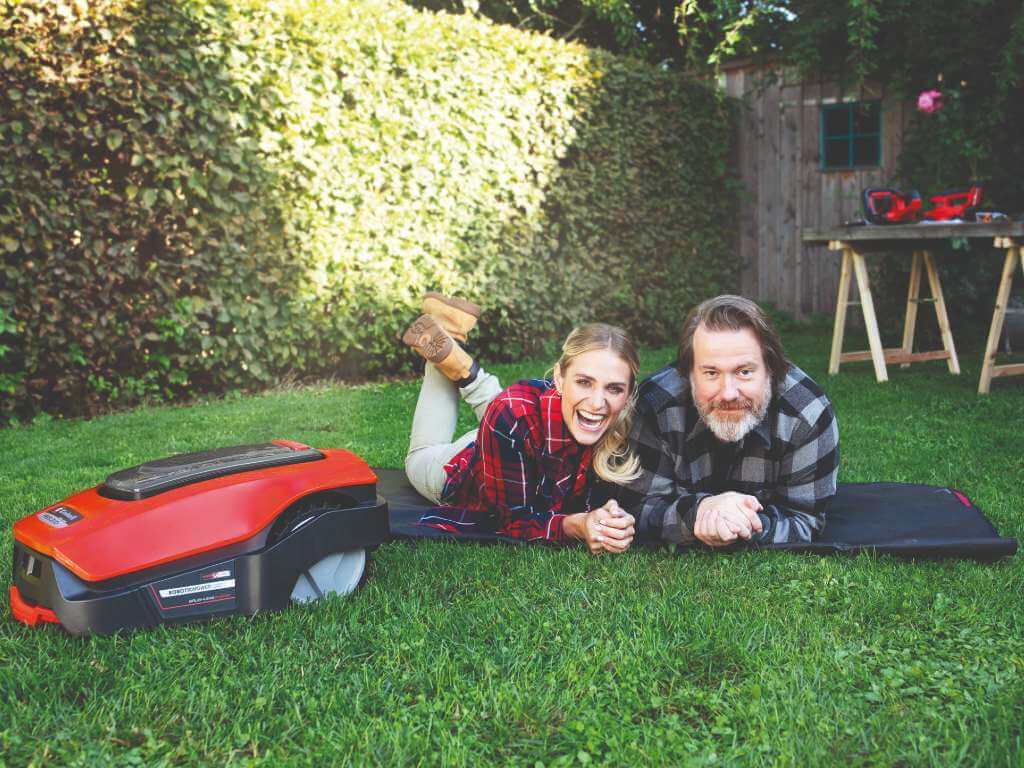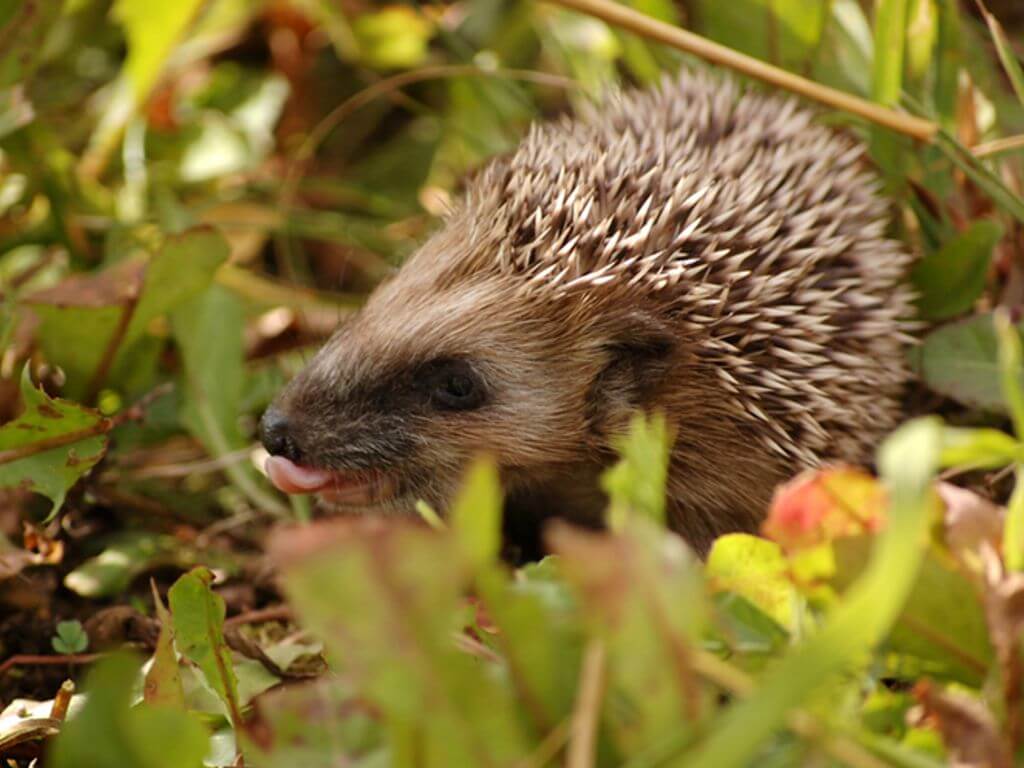Animal-Friendly Garden Despite the Robot Lawn Mower: This Is How You Protect Bees, Hedgehogs & Co.
The welfare of hedgehogs, bees and Co. is important to you as an animal lover, but you still do not want to give up the convenience of a robot lawn mower in your garden? In this article, you will learn how to combine both.
The demand of robot lawn mowers has been increasing for several years. A robot lawn mower is practical, does the work for us and gives us a perfectly cut lawn - without having to start the lawn mower. Nevertheless, the robots are also facing some criticism, e.g. on the part of animal rights activists. Yes, robot lawn mowers can be harmful to hedgehogs, bees and other animals in our garden. It takes the food base from insects and poses a high risk of injury to hedgehogs, which, as is well known, do not flee when they are in danger, but curl up as the critics say. That does not have to be. With many simple things, you can have a hedgehog- and bee-friendly garden despite the robot lawn mower. Here are our tips:
Adjust mowing times: No mowing after sunset!
The best and easiest way to prevent hedgehogs from being injured by robot lawn mowers is: Avoid mowing times at night or during twilight. This is when hedgehogs and many other animal garden visitors are active and looking for food. When it is light outside, the chance of the hedgehog and robot lawn mower meeting is significantly lower. Nevertheless, it is favorable to search the lawn again for hedgehogs or other small animals before mowing.
In addition, the robot lawn mower should not mow daily. Therefore, you give your lawn a break and the main source of food for bees, hedgehogs and many other animals remains. Alternatively, individual areas can be excluded from mowing for a certain period to give the animals a source of food. Also see the section “Creating food sources”

What do I have to consider when choosing the robot lawn mower?
When purchasing the robot lawn mower, you can already rely on a more animal-friendly model: Make sure to choose a robot lawn mower with a lower apron - like the Einhell devices - because the lower the apron, the sooner the robot stops with small obstacles, such as a hedgehog. Alternatively, a so-called “apple apron” can be retrofitted to lower the apron itself. This is supposed to prevent apples from damaging the mower, but it also protects small animals. If you stick this apple apron e.g. in the form of a strip of solid rubber with double-sided tape to your already purchased robot, you can easily adjust or remove it. Important: with permanent changes e.g. screwed parts, the manufacturer’s guarantee can be void. It is also important not to attach the apple apron or the rubber strip too deep, because this could restrict the functionality of the robot lawn mower, e.g. mowing on a slope. Make also sure that the robot’s knives are additionally protected. At the Einhell robots, for example, the grass has to go through a comb before it gets cut. This further increases the level of security.

In addition to hedgehogs, how do I protect my pet and other animals?
In order to protect pets like dogs and cats next to hedgehogs, the same precaution applies as for small children: The robot should not drive without supervision when there are pets in the garden. In addition, the purchase of a robot lawn mower with an apron as deep as possible or the use of an apple apron is also favorable for pets.

Animal-friendly garden despite robot lawn mower: How to do it!
However, you can also make your garden yourself animal-friendly by ensuring that insects and other animals find enough food and shelter despite the “bald” robot-mowed lawn.
Create enough food sources
Bees do not only produce honey, they also take on an essential role in pollination in our ecosystem. Unfortunately, humans pose a threat to bees and other insects in many areas, whether through fertilizers, pesticides or reducing food sources. The latter is the reason why bee guards warn of robot lawn mowers. Instead of a barren lawn, a wildflower meadow would be ideal for bees and all other insects that feed on nectar. Now, of course, this is not an option for every garden owner. So what do you do for a bee‐friendly garden?
One possibility is to leave at least part of the lawn area overgrown or to create a special wildflower island. Seed mixtures for such bee‐friendly flower meadows are now available in every hardware store. With a universal spreader evenly spread, a large number of flowers will soon be available as food.
There are also bee‐friendly perennials and plants, such as wild perennials, fruit trees, berry bushes, but also ivy and wine. Seasonality should also be taken into account when selecting flowering plants. By choosing plants that bloom at different times, bees find food all year round. Wild bees also prefer native plants because they already know them from their natural habitat.
Tip: Did you know that an herb bed is also bee‐friendly? With rosemary and lovage, the spring bloomers from March to May, coriander and sage, which provide food in the summer months from June, and thyme and lavender, which bloom until late in the autumn, you add spice to your food and make bees all year round a joy. The insects also gladly accept food sources on the terrace and balcony. With a vertical raised bed, you have your herbs ready to hand at all times.
By using food sources to ensure that insects, arachnids etc. feel good in your garden, you automatically create food sources for larger insects or small animals, such as hedgehogs, which in turn feed on insects. Did you know that hedgehogs also eat snails? One more reason to make them feel comfortable in your garden.
Create retreats
The flat lawn that the robot lawn mower leaves behind and which most garden owners want, unfortunately does not offer any retreat for animals. In addition to hedges or bushes, which already serve as the main retreat for many hedgehogs and insects, a self-made insect hotel or a small hedgehog house can serve as another shelter for the animals. It is best to place the house near bushes, hedges or shrubs, where the animals feels safe. However, be careful: not every material is suitable for the construction of an insect hotel. Here you should inform yourself well before building or buying! Piled leaves or garden waste can also be kept as a shelter in the garden. They provide protection for a hedgehog and the robot lawn mower recognizes the deciduous hills as an obstacle. Hedgehogs also like to spend the winter in such hiding places. In general, you should check whether there are hedgehogs or other small animals in the garden before disposing green waste or piles of leaves.
Avoid weed killers
Pesticides and other chemical substances that some hobby gardeners use in the garden are things that you should rethink for a bee-friendly and near-natural garden. How about natural alternatives? For example, pine needles provide great snail protection. As a natural fertilizer and against pests, nettle slurry also counts as a miracle cure. Evenly distributed with a cordless pressure sprayer, it is a natural and effective replacement.
Conclusion
If you follow all these tips, you will not only have a bee- and hedgehog-friendly garden, but will also look forward to the flowers for bees and the cleanly mowed lawn thanks to the robot lawn mower.
